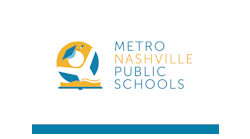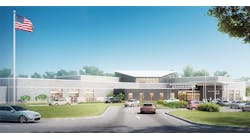The most critical role for schools and universities is to provide a setting conducive to learning. If students and staff don't feel safe, education often takes a back seat. In recent years, many institutions have paid greater attention to how they can enhance safety and security on their campuses.
Statistics at the K-12 level indicate that the greater focus on school security has made a difference. According to the federal government's “Indicators of School Crime and Safety 2003,” violent crime victimization rates for students 12 to 18 years old declined from 48 incidents per 1,000 students in 1992 to 28 incidents per 1,000 students in 2001.
Still, violence and crime remain problems in schools. The same report notes that 71 percent of public schools reported at least one violent incident in 1999-2000, and 20 percent experienced one or more serious violent crimes.
Here are 10 approaches many schools and universities have found are effective in enhancing security on their campuses:
Crime prevention through environmental design
The design of a school facility can greatly influence the overall safety of the environment. Crime Prevention Through Environmental Design (CPTED) helps institutions choose building layouts and features that promote desirable behavior. CPTED encourages strategies such as minimizing the number of buildings on a campus; limiting the number of entrances to buildings; ensuring that administrative offices have clear sightlines of the main entry, parking lots and play areas; and establishing boundaries between a school and adjacent properties.
“A school's physical structure should inherently provide adequate natural surveillance, natural access control, and territoriality to minimize the need for technological fixes,” states a guide from the Northwest Regional Educational Laboratory (NWREL), “Ensuring Quality School Facilities and Security Technologies.”
Smaller schools
Large schools where students find it easier to be anonymous or ignored are more prone to violence than smaller schools. Without a sense of belonging, students can become alienated from the school community. About 36 percent of schools with 1,000 or more students experienced a serious violent crime in 1999-2000, compared with 10 percent of schools with less than 300 students, according to “Indicators of School Crime and Safety 2003.” In the same report, 26 percent of principals at schools with 1,000 or more students reported student verbal abuse of teachers, compared with 7 percent of schools with less than 300 students.
Motivated by such statistics and other evidence that smaller schools help myriad students improve their academic performance, many institutions are trying to build smaller schools or divide large schools into smaller learning communities.
Groups such as the Bill and Melinda Gates Foundation have provided grants to assist institutions in creating smaller schools.
Limited public use
As schools become more amenable to letting the community at large use their facilities, officials should be cognizant of the security concerns that may arise from that increased access. The best solution is for schools to restrict after-hours public access to the building to a small area of the facility.
For new facilities, schools should pursue designs that group potential public-use areas — gymnasiums, auditoriums, media centers — and provide a separate entrance so that the rest of the building can be locked down and secure.
Crisis plans
When trouble erupts at a school, administrators have to know how to react. Rather than making critical decisions amidst the chaos of an ongoing emergency, school officials should have comprehensive crisis plans in place in anticipation of trouble.
The U.S. Department of Education says schools should develop such a plan together with law-enforcement agencies and other public-safety agencies. It should address emergencies such as fires, school shootings and accidents, as well as biological, radiological, chemical and other terrorist activities. The plan should be reviewed regularly, and the school should conduct crisis training and practice drills regularly.
Lighting
A well-illuminated campus takes away the cover of darkness that many vandals and other criminals use to carry out their activities. Lighting helps administrators monitor outside areas of school property and wards off trespassers. Motion detectors and timers can help schools maximize the efficiency of their lighting by providing protection at the appropriate times.
Some school administrators have adopted an opposite strategy. Believing that too much light draws attention to school facilities that otherwise would be unnoticed in the darkness, some institutions have opted to turn the lights out at night. Administrators have to determine which method would be the most effective security strategy for their schools.
Resource Officers
Police presence can make a community feel safer, and a school community is no exception. In schools across the nation, thousands of school resource officers — sworn municipal police officers whose beat is the school — help make schools more secure and provide an avenue for students to discuss safety concerns or report potential trouble.
A 2001 survey of resource officers by the National Association of School Resource Officers found that 92 percent of the officers said they had prevented one to 25 acts of violence per school year, and 94 percent said that students had told them ahead of time about violent incidents that were supposed to take place.
Access control
Technology has made access cards commonplace, especially on college campuses. They allow schools to control who can get in to a building and unlike most keys, can be deactivated when lost or stolen. Access-control systems also can alert security personnel of potential breaches, such as when a door is propped open. Some schools use cards in combination with an access code entered into a touch pad. Others have adopted biometric systems that identify students and staff through fingerprints and facial scanning.
Many campuses have integrated numerous functions onto a student's ID card: controlled access into residence halls, recreational facilities or academic buildings; dining hall meal accounts; debit accounts for vending machines or campus retail outlets; library borrowing; and other services.
Cameras
In the same way that home VCRs evolved from a rare luxury item to a standard accessory, video equipment has become more commonplace in school security. Cameras help schools and universities monitor property and student behavior in hallways, parking lots, cafeterias and other areas of campus. And just as DVD players and digital recorders are supplanting the VCR, technological advancements are providing school security personnel with more options and lower costs.
Digital recording allows schools to save hours upon hours of video without consuming the storage space that video cassettes do; web-based systems allow police and other emergency personnel to tap into what a camera is showing immediately. Declining costs allow schools and universities to cover more campus territory more effectively.
Over the last four years, the Biloxi, Miss., school district has taken advantage of those improvements and has installed cameras in every classroom in its 11 school buildings. It is believed to be the first district to install surveillance in every classroom. Officials there say they believe the cameras have helped improve safety and, in some cases, kept students more focused on academic work.
Communications
As education facilities have become more wired and wireless technology has improved vastly, schools have become more accommodating to easy communication. Instead of students and teachers isolated from the rest of the school in individual classrooms, cell phones, two-way radios and enhanced intercom systems can provide the most remote area of a school building with a lifeline in the event of an emergency.
“Telephones, radios, cell phones, intercoms, public-address systems, and pagers are the least controversial, and possibly the most sensible, technological fixes that can be employed,” states the NWREL's “Ensuring Quality School Facilities and Security Technologies.” “Trouble can occur anywhere on or near campus. If staff can immediately call for help, damage can be minimized.”
Administrators should make sure that school buildings have the necessary equipment to allow communications technology to work effectively.
Metal detectors
Schools that have serious problems with weapons frequently use metal detectors to search students and visitors. According to “The Appropriate and Effective Use of Security Technologies in U.S. Schools,” metal detectors can accurately detect the presence of most firearms and knives, but only if the equipment is used correctly and the security personnel operating the machinery is trained properly.
“A metal detector alone cannot distinguish between a gun and a large metal belt buckle,” the report states. “This shortcoming is what makes weapon detection programs impractical for many schools.”
The report emphasizes that a detector should be set up so that all students, staff and visitors are required to pass through the detector, and that there is no space for anybody to walk around the system and evade detection.
Kennedy is staff writer for AS&U.

